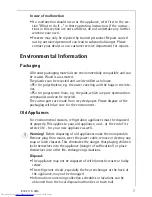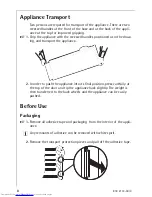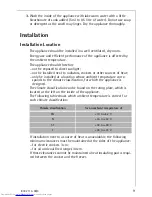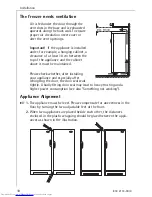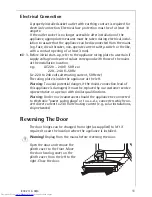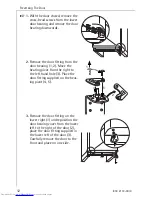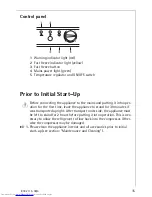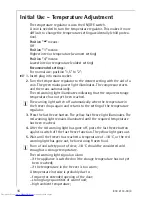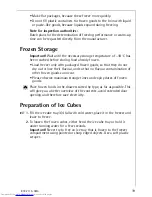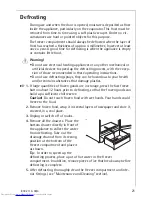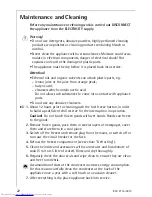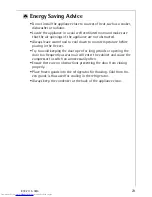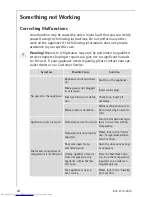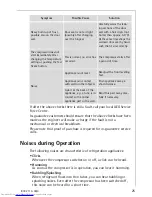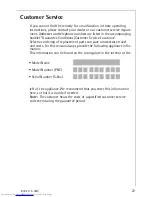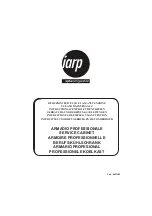
818 2113-00/4
21
Defrosting
During use and when the door is opened, moisture is deposited as frost
inside the appliance, particularly on the evaporator. This frost must be
removed from time to time using a soft plastic scraper. Under no cir-
cumstances use hard or pointed objects for this purpose.
The freezer compartment should always be defrosted when the layer of
frost has reached a thickness of approx. 4 millimetres; however at least
once a year. A good time for defrosting is when the appliance is empty
or contains little food.
1
Warning!
• Do not use electrical heating appliances or any other mechanical or
artificial devices to speed up the defrosting process, with the excep-
tion of those recommended in these operating instructions.
• Do not use defrosting sprays, they can be hazardous to your health
and/or contain substances that damage plastics.
0
1.
If large quantities of frozen goods are in storage, press the fast freeze
button about 12 hours prior to defrosting, so that the frozen goods can
build up a sufficient chill reserve.
Caution!
Do not touch frozen food with wet hands. Your hands could
freeze to the food.
2.
Remove frozen food, wrap it in several layers of newspaper and store it,
covered, in a cool place.
3.
Unplug or switch off of mains.
4.
Remove all the drawers. Place the
bottom drawer directly in front of
the appliance to collect the water
from defrosting. Take out the
drainage channel from its resting
position at the bottom of the
freezer compartment and place it
as shown.
Tip:
In order to speed up the
defrosting process, place a pot of hot water in the freezer
compartment. In addition, remove pieces of ice that break away before
defrosting is complete.
5.
After defrosting, thoroughly clean the freezer compartment and inte-
rior fittings ( see "Maintenance and Cleaning" section).

